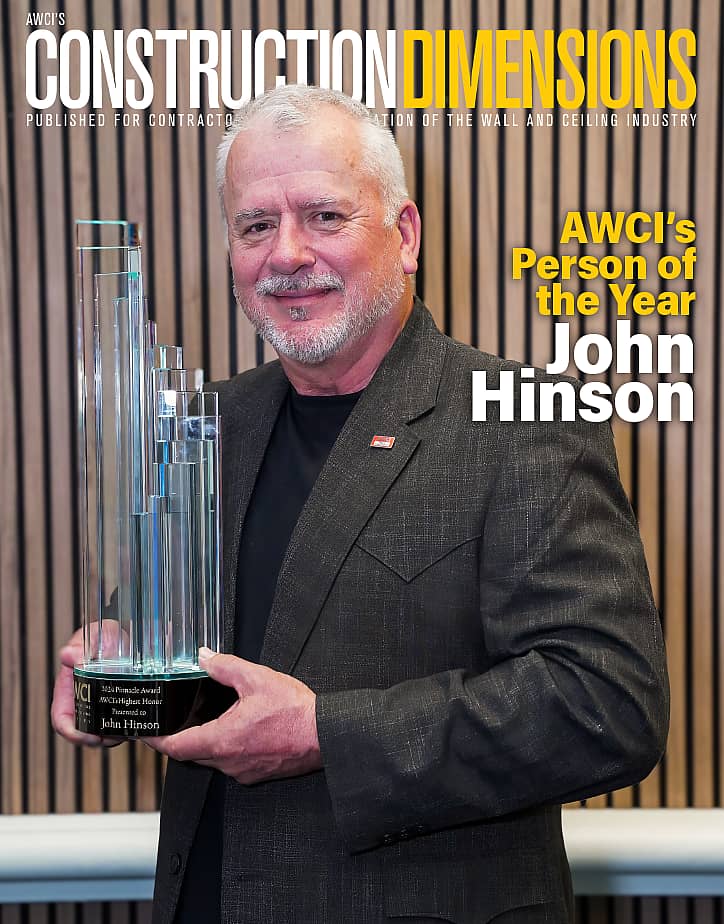You run to catch up with the sun, but it’s sinking …—Pink Floyd (from “Time”)
It was about this time of year some 25 years ago that I landed my first stint as a full-time estimator. I was rather bluntly made aware that I was replacing another probationary candidate who had a habit of leaving the office at 4 o’clock sharp every day, deadlines notwithstanding. Upon missing a critical bid due date, the bewildered prospect was instantly issued two paychecks and shown the door. The message was not lost on me: Miss a deadline, hit the road. Well, forewarned is forearmed, and the expectation did not seem unreasonable at the time. But that early admonishment planted a seed of anxiety within me that has grown over the years into something of a subliminal boogeyman.
Today, quantifiers everywhere have been complaining that the angst has become more pronounced of late. In fact, you’ve probably noticed that for the past several years your own deadline anxiety has subtly crept into your bid-time mentality on all projects of any consequence. Why is that?
Well, it’s my experience that sources tend to be multiple, and these pre-bid boogeymen are no exception. Although most quantifiers are loathe to admit it, fear of inaccuracy is likely behind our deadline dread more than anything—fear that our number is too high or too low and fear of the attendant consequences. Our boogeyman is reminding us what we already know: If our number is too high, we lose the opportunity to perform, and if it’s too low, we can be saddled with a loss that perhaps our organization cannot absorb.
But potential error has always been part and parcel of our endeavor to predict a value from a collection of conceptual drawings and guidelines. Estimators have dealt with that menace for years and replaced doubt with a certain faith in our ability to produce a reasonable number that always has a good balance between reservation and recklessness. So why now the prevalent foreboding that seems to haunt the backstreet passages of our minds? Are we losing our nerve?
I suggest instead that there are a number of prevalent conditions beyond our control that have markedly worsened over the past several years. The top three by my reckoning are poorly rendered bid documents, lack of adequate time to prepare and diminishing markup rates.
Quotesmiths nationwide are painfully aware of the deteriorating state of the quality of bid documents, as we bidmeisters are subjected to their deplorable level on a daily basis. But how designer-generated obfuscation and vagueness contribute to an estimator’s anxiety should be apparent. If the design team’s intent on one assembly or another is unclear, the estimator must make a subjective call—one that is inclusive or exclusive of value. Thus, uncertainty is introduced into the process. Multiply this by several assemblies and inferences, and value becomes more and more subjective until uncertainty devolves into anxiety and fear of the latent gotcha! factor that’s inherent in so many of the renderings these days. In sum, ambiguity begets apprehension.
Similarly, the time frame allowed for developing a strong proposal relative to the size and complexity of the projects seems to be shrinking at an alarming rate. I understand the force that drives this phenomenon, and it is perfectly reasonable. Once investors commit to moving the project from concept to construction, the completion date represents that point in time that initiates return on investment. Durations are compressed, and the preconstruction phase is not immune to the time crunch. But one of the consequences of shortened estimating timelines is the sacrifice of accuracy. A rush job always leaves an estimator questioning whether he gave this or that detail its due consideration. Was there a critical line in the specifications that he breezed past? Did the bid instructions require scope items that were missed due to last minute haste? Enter fear of inaccuracy.
Last but not the least is the diminishing markup phenomenon. Many successful drywall firms have recognized the necessity of reducing profits in order to remain competitive in this aggressive construction market, and I have long lauded the wisdom in easing back on profit/overhead margins in order to help estimators procure work. But such restraint also eliminates much of the grace that comes with a comfortable buffer. Lower markup means less forgiveness for under-predicted durations or underestimated costs. For an estimator, a diminishing markup translates into a shrinking target.
And so we have unmasked the culprits for due date anxiety: bad bid docs and shrinking time frames undermine accuracy, while diminishing markups demand a greater level of it. No wonder so many of us have been losing sleep.
But how do thoughtful bidmeisters deal with deadline anxiety? I propose that next month’s column will provide suggested antidotes for due-date dread—remedies that are non-narcotic, non-alcoholic, but hopefully habit-forming. Until then, try Benadryl and a glass of Merlot. Right now, I need to get this column sent off. I’m under deadline, you see.
Vince Bailey is an estimator/project manager in the Phoenix area.




